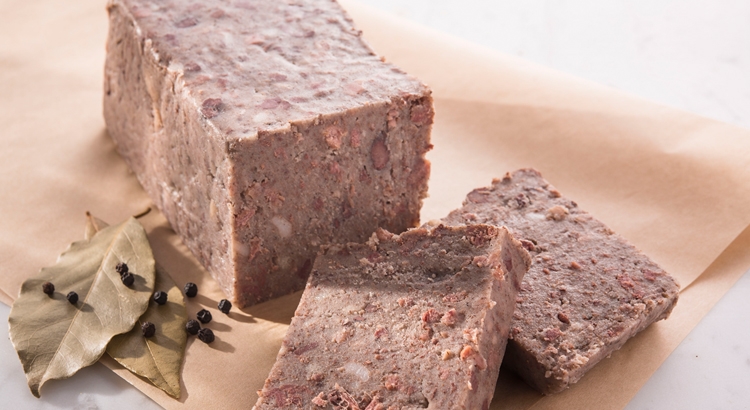Balkenbrij
Balkenbrij is a traditional Dutch food that shares some of the characteristics of American scrapple. Traditionally, its preparation and consumption was an important economizing custom, especially for the rural poor. Particularly, it allowed farmers to use various less-desirable parts of pork, which were made more palatable by being added to a seasoned porridge of groats or flour. The closely related 'Panhas', 'Pannas' or 'Möppkenbrot' are widely known in the whole northwest of Germany; the last variety is a speciality of middle Westphalia and Rhineland. Originally, balkenbrij was prepared upon farms at the end of the pig-slaughtering process, in the pot used to cook the swill. It was eaten soon because of its poor shelf life. It is traditionally made of stock left over from the making of sausages like liverwurst, boiled with flour (and sometimes blood, which turns the color from white to black) and bacon, together with odd scraps and various organ meats of the animal such as liver, kidney and/or lungs. All of these are cooked, ground, then cooked again with flour (either wheat or buckwheat) or oatmeal, and a special spice mix ("rommelkruid") consisting of liquorice, sugar, anise, cinnamon, clove, white pepper, mace, ginger powder and sandalwood, and finally poured into a pan or mold and cooled off to achieve the form of a loaf. The loaf of balkenbrij is then sliced (about 1 cm thick), and the slices are dusted with flour and fried, traditionally in lard.
Source: Wikipedia





